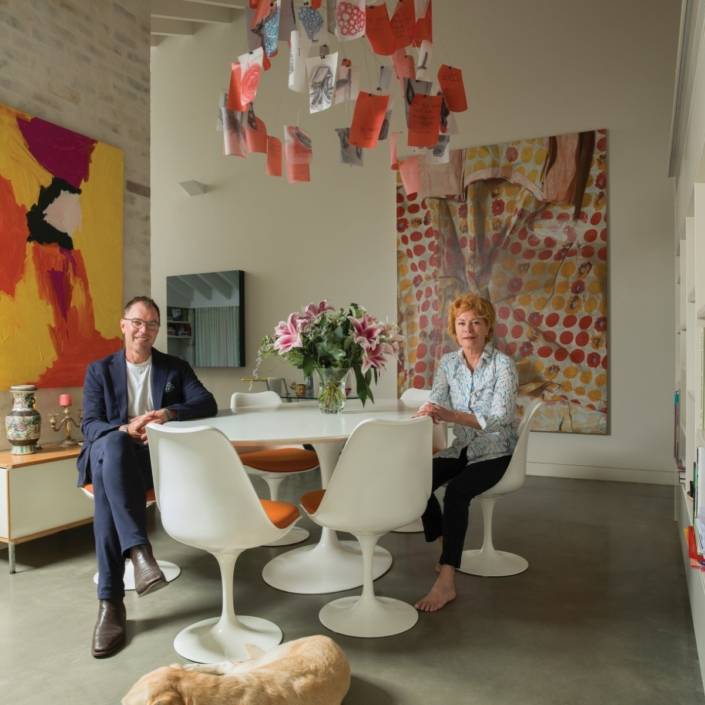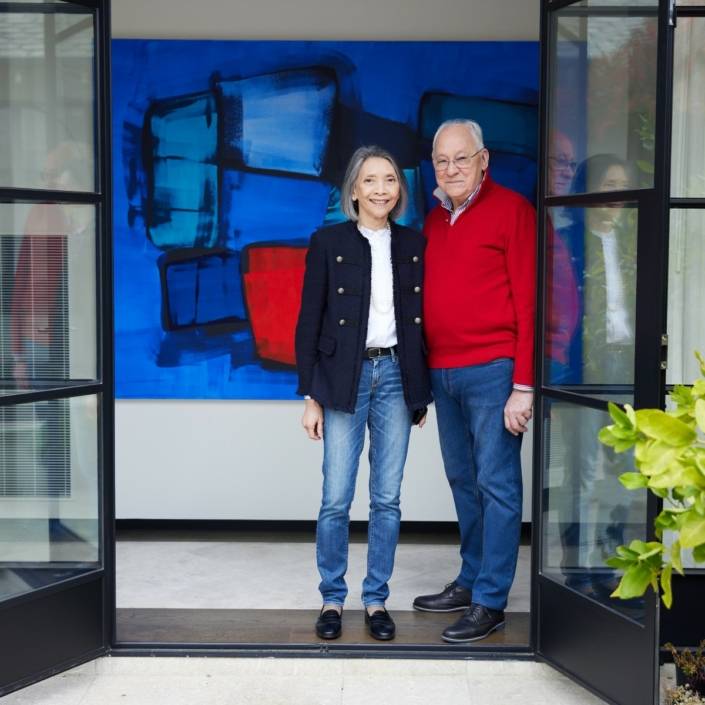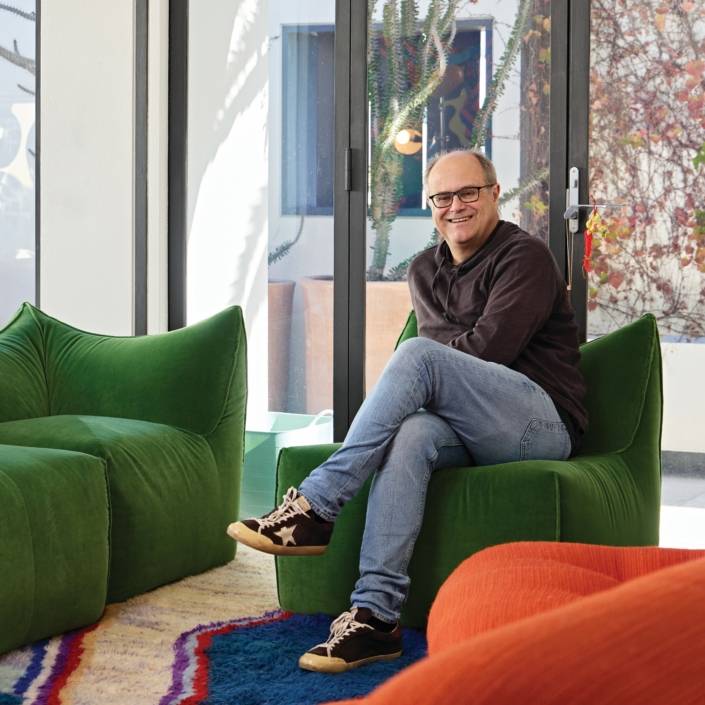Collector Profile: James Roland and Becky Sparks
When Roland and Sparks married, they made a promise to buy a piece of art to celebrate every wedding anniversary. At the end of their first year as newlyweds they had bought seven pieces.
Words: Stella Rosa McDonald
Photography: Zan Wimberley
The inner Sydney apartment James Roland and Becky Sparks share with their one- year-old son Henry, with its kitchen for one, wide wall of reference books, odd objects, salon-hung hallway, and small bedroom where Shaun Gladwell and Alan Jones hang like quotation marks at either end of the bed, appears like a still life of their approach as collectors. It is a home where art lives democratically with their real life.
When Roland and Sparks married, they made a promise to buy a piece of art to celebrate every wedding anniversary. At the end of their first year as newlyweds they had bought seven pieces and now, after nine years together, they have over 250 works in their collection, much of which is on loan to institutions, exhibitions and a few lucky friends. “We became addicted to it. We’ve probably spent a ridiculous amount relative to our earning; hence we’ve got a kid and live in a one bedroom flat,” Roland says laughing. As young enthusiastic collectors starting out, they were advised to develop a methodology to reign in their passion and give greater shape to their collection. “Also James would buy everything if he could,” Sparks adds. “He really would.” They decided upon a methodology that was simple yet significant: collecting the art of their contemporaries. They found that emerging and mid career artists of their generation were conceptual and technical risk-takers and they felt the significance of giving younger artists emotional and financial support at the beginning of their careers.
“You don’t just go from art school to the Museum of Contemporary Art. There is a period in the food chain where people with boring jobs, like Becky and I, need to fund creative people to produce work,” Roland says. “It’s not wholly altruistic because we really enjoy it, but one thing I do say to people is it’s not just about the commodity, it’s also about the relationships you build.” The couple maintains close friendships with many of the artists they collect, and have a genuine curiosity about the stories their works tell. As a testament to this, a carved wooden VB longneck in a brown paper bag sits on a shelf in their home – a gift for Roland’s birthday from the artist Marley Dawson. The first works they bought as a couple that were indicative of the direction their collection would take were Newell Harry’s Untitled (‘Koffie Moffie’), a scrawled text work that explores language and identity, and an abstract figurative painting by Alan Jones that now hangs in their hallway. “Both are works from 2006 which we bought at a similar time. Both are young artists, who were still emerging at the time, both of whom we have got to know and continue to follow their practice,” Sparks says.
With backgrounds in law and finance, the couple dedicate much of their downtime to sharing the importance of being involved in the arts with friends, colleagues and peers who are astonished and sometimes confounded by their growing collection. This is part and parcel, they say, of supporting the artists whose work they love. “Where I think we make the biggest contribution,” Roland says, “is by, of course, buying work, but also by spruiking the importance and the ease of being involved in the arts to people who might not know a lot about art, but will. These are people who have the right intentions but are intimidated or unsure of how to get involved.” Roland and Sparks don’t see any value in maintaining the idea that supporting the arts is an elitist pursuit. Perhaps as a salve to this, their collection is filled with works that use misdirection, word play and fiction, often by artists who work across multiple mediums in a single series.
In the lounge room, an early installation by Marley Dawson – a translucent canvas suspended by a series of pulleys – hangs almost gleefully next to the family’s television. Across from it, TV Moore’s bold photographic painting Future Primitive echoes the Kings Cross strip nine floors below. A series of works by the sculptor Emma White – an artist who renders common objects in polymer clay and pursues the boundaries between what is fake and what is real – stands in a corner of the lounge room looking like a forgotten school project and is only divisible from the other objects in the room by its housing in a glass vitrine. Above Henry’s cot, a large architectural Jasper Knight painting seems to allude to the form and function of the Woolloomooloo wharves, hidden behind the windowless north- facing wall of their apartment.
As we sit together in their home, surrounded by bold, narrative, conceptual works of art, I can’t help but think that many of the young artists in their collection would relish this opportunity to see their simulations of everyday life accommodated so convincingly amongst the real thing.
This article was originally published in Art Collector issue 69, JUL – SEP 2014.






